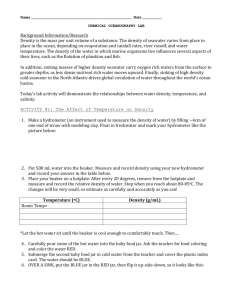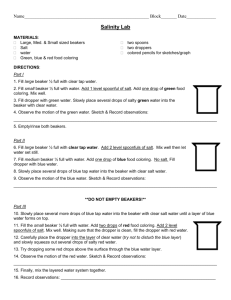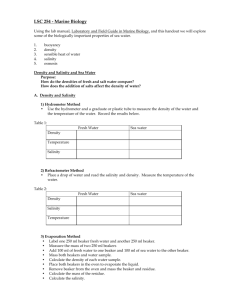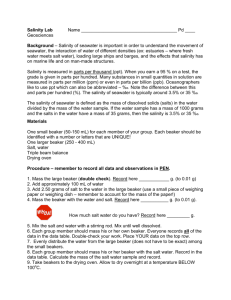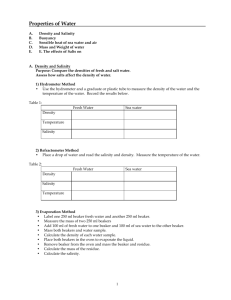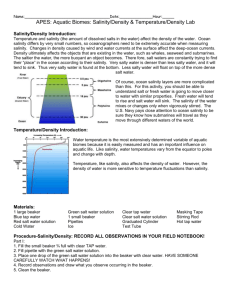SALINITY LAB
advertisement
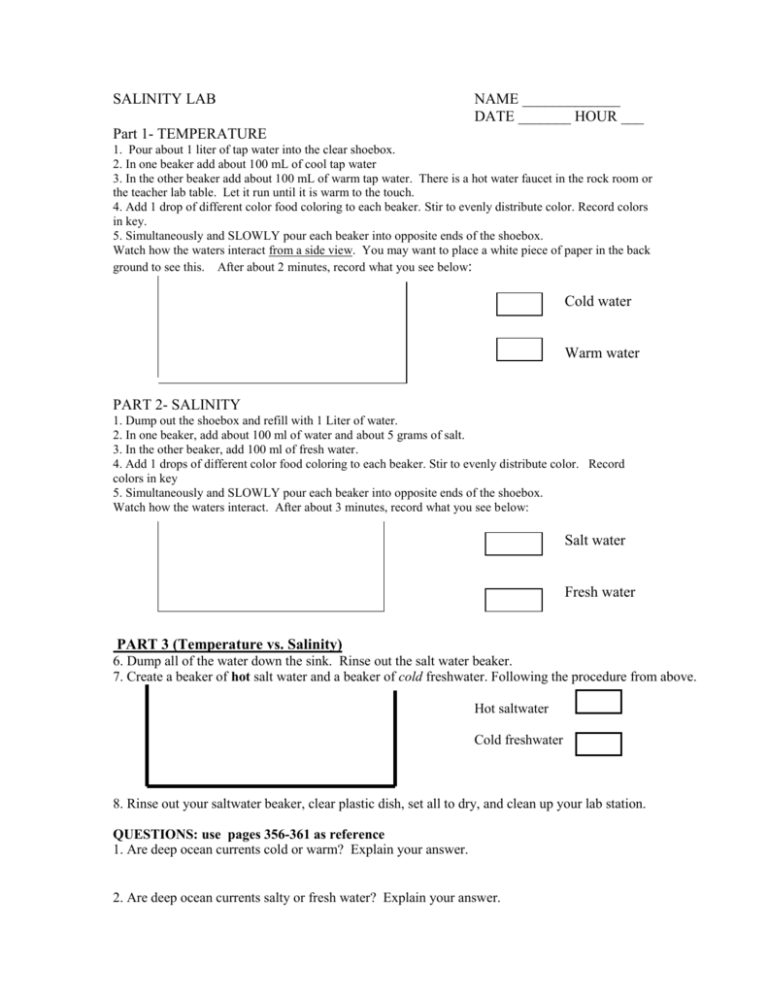
SALINITY LAB NAME _____________ DATE _______ HOUR ___ Part 1- TEMPERATURE 1. Pour about 1 liter of tap water into the clear shoebox. 2. In one beaker add about 100 mL of cool tap water 3. In the other beaker add about 100 mL of warm tap water. There is a hot water faucet in the rock room or the teacher lab table. Let it run until it is warm to the touch. 4. Add 1 drop of different color food coloring to each beaker. Stir to evenly distribute color. Record colors in key. 5. Simultaneously and SLOWLY pour each beaker into opposite ends of the shoebox. Watch how the waters interact from a side view. You may want to place a white piece of paper in the back ground to see this. After about 2 minutes, record what you see below: Cold water Warm water PART 2- SALINITY 1. Dump out the shoebox and refill with 1 Liter of water. 2. In one beaker, add about 100 ml of water and about 5 grams of salt. 3. In the other beaker, add 100 ml of fresh water. 4. Add 1 drops of different color food coloring to each beaker. Stir to evenly distribute color. Record colors in key 5. Simultaneously and SLOWLY pour each beaker into opposite ends of the shoebox. Watch how the waters interact. After about 3 minutes, record what you see below: Salt water Fresh water PART 3 (Temperature vs. Salinity) 6. Dump all of the water down the sink. Rinse out the salt water beaker. 7. Create a beaker of hot salt water and a beaker of cold freshwater. Following the procedure from above. Hot saltwater Cold freshwater 8. Rinse out your saltwater beaker, clear plastic dish, set all to dry, and clean up your lab station. QUESTIONS: use pages 356-361 as reference 1. Are deep ocean currents cold or warm? Explain your answer. 2. Are deep ocean currents salty or fresh water? Explain your answer. 3. Is salinity or temperature more of a factor when creating a deep water current. Explain your answer. 4. The map above shows salinity boundary lines called isohalines. The average salinity of ocean water is 35%. On the map above color in the areas with higher than average salinity. 5. Write a sentence relating latitude to salinity. 6. When ocean water evaporates, the salt does not evaporate. How would evaporation change salinity in the ocean? 7. What would decrease the salinity of ocean water? 8. Why is the Red Sea so salty? 9. If the glaciers on Greenland melt (fresh water), how would this change the strength of deep water currents of the North Atlantic? Explain why. 10. Using your own words, describe what a thermocline is. 11. Look at figure 13.12 on page 368. What does the thermocline prevent? What problem regarding life does this cause in tropical oceans? (page 368) 12. Use your own words to describe why the ocean is salty.

